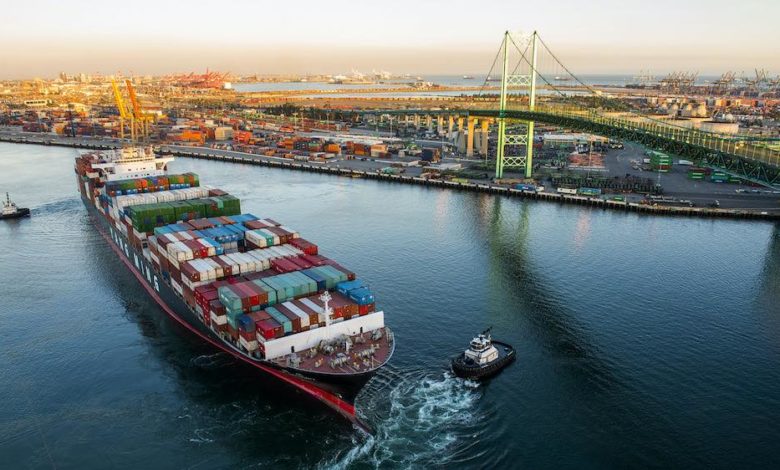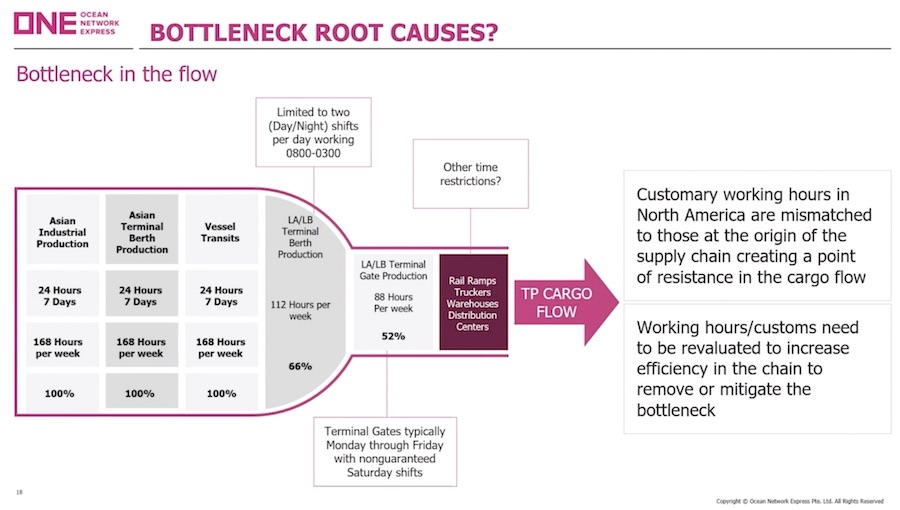Biden meets with California port leaders to address bottlenecks, announces expansion of 24/7 operations

On Wednesday, President Biden met with the heads of the Ports of Los Angeles and Long Beach – Gene Seroka and Mario Cordero, respectively – and the International Longshore and Warehouse Union (ILWU) to discuss actions they are each taking to address delays and congestion across the transportation supply chain in Southern California.
The Port of Los Angeles (POLA) announced that it will join the Port of Long Beach (POLB) in expanding to 24/7 operations. POLA will add new off-peak nighttime shifts and weekend hours, nearly doubling its hours of operation. The ILWU said its members are willing to work those extra shifts to add needed labour capacity.
Several large US companies – Walmart, UPS, FedEx, Samsung, The Home Depot and Target – also announced commitments to move cargo during nighttime hours. Together, these six companies will move more than 3,500 additional containers per week at night through the end of the year.

Transportation secretary Pete Buttigieg and port envoy John Porcari expect to continue to work to help more businesses access these expanded hours, and move the rest of the supply chain towards 24/7 operations.
Biden noted that “most of the leading countries in the world already operate” on a 24/7 system. He said that, “by increasing the number of late-night hours of operation and opening up for less-crowded hours when the goods can move faster, today’s announcement has the potential to be a gamechanger.”
The president reiterated his administration’s commitment: “Strengthening our supply chains will continue to be my team’s focus. If federal support is needed, I will direct all appropriate action. And if the private sector doesn’t step up, we’re going to call them out and ask them to act. Because our goal is not only to get through this immediate bottleneck, but to address the longstanding weaknesses in our transportation supply chain that this pandemic has exposed.”
Extreme demand from American consumers combined with pandemic-related hitches in the supply chain have brought plenty of frenzied headlines across American media titles about empty shelves at Christmas time in recent weeks.
Data from tech firm Project 44 shows orders from China are reaching American customers with a delay of at least 10 days compared to 2019 pre-pandemic delivery times. Freightos data, meanwhile, showed China-US end-to-end ocean shipments took an average of 73 days in September, 83% longer than in September 2019.


This did not address the real issues:
1.) Chassis are not available anywhere in the US, yet the US continues to charge anti dumping on any importation if them.
2.) Automation at US ports is well behind that of other countries, the efficiency of these ports effects how well cargo can be offloaded from vessels.
3.) The main congestion issues are not directly the ports themselves but in the rail carriers not having the ability to move goods inland due to drayage providers not being able to pick up cargo from item 1.
4.) Importers refusing to change mentality of how to do business and accept additional charges of transload programs.
5.) Lack of warehousing and people willing to work in warehouses at the port and interior locations.
6.) The uncertainty in the market with longshoreman labor negotiations coming due on the west coast in July 2022.
Of all the items above, the President can fix #1 the fastest… it’s low hanging fruit. Rather than jump into this the administration has decided to just beat up the ports and tell them “move faster”… ok, but where the hell are they going to put the containers?
You get it, they don’t!
This all looks and sounds like digging a hole to bury a pile of earth. The comments above are spot on and apply elsewhere. There is a lot of hand wringing and wailing over Felixstowe and its current position. Other ports don’t seem to be so badly affected